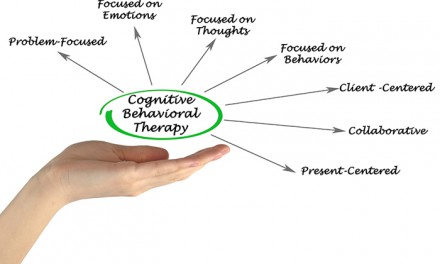Chronic Pain – A Cycle
Chronic pain, it probably goes without saying, is bad in and of itself. A significant number of people—studies indicate as many as one in five—suffer from ongoing pain that can have a devastating effect on their day-to-day lives.
Even worse, those dealing with chronic pain are at significant risk for developing a substance use disorder. Whether the substance in question is opioids or another drug or combination of drugs, the need to escape from the pain can lead to unhealthy decisions.
In fact, pain can lead to what might seem like a never-ending cycle. Chronic pain leads to problematic substance use which leads to recovery which leads to the return of the chronic pain—and the cycle repeats.
Fortunately, there are alternative ways to manage chronic pain.
Chronic Pain: Causes and Effects
The term “chronic pain” is a kind of catchall term for as many as seven categories of persistent pain:
- Chronic primary pain: Pain lasting three months or longer that cannot be attributed to any other condition
- Chronic posttraumatic pain: Pain lasting three months or longer following trauma or surgery
- Chronic neuropathic pain: Pain resulting from damage to the somatosensory nervous system
- Chronic headache and orofacial pain: Pain experienced in the head or face which occurs on fifty percent of days over a three month or longer period
- Chronic visceral pain: Pain experienced in an internal organ
- Chronic musculoskeletal pain: Pain experienced in muscles, bones, joints, or connective tissue
- Chronic cancer pain: Pain related directly to cancer or to the treatment of cancer
Whatever the cause, the effects of chronic pain are many:
- Interrupted sleep or other sleep disturbances that sap a person’s energy
- Difficulties at work that may lead to financial challenges
- Increased feelings of stress, depression, and anxiety
- Impaired reasoning, cognition, and judgment
- Difficulties in social situations that may undermine relationships with friends and family
Substance Abuse: The Signs
Because chronic pain is such a risk factor for misuse of drugs or alcohol, it is essential to recognize the signs that may indicate a person has a problem. Those signs include:
- Requesting increased doses of medication or seeking prescriptions from more than one physician
- Using alcohol or illegal drugs in addition to pain medications
- Defensiveness, drastic changes in behavior or mood, or withdrawal from family and friends
- Neglecting personal hygiene or appearance
If you or a loved one are exhibiting any of these indicators, it is time to seek help—including finding alternative strategies for managing chronic pain.
Routes to Relief: What to Try
Fortunately, there are ways to manage chronic pain that do not include opioids or other drugs. In a recovery center, a care team will create a personalized plan designed to reduce pain and limit the risks of relapse. The available options include:
- Find a new approach to food: A change to a diet like the Mediterranean diet—which includes leafy vegetables, fresh fruits, whole grains, fish, and olive oil—may reduce pain by improving overall health and reducing inflammation.
- Engage with your environment: Decluttering and simplifying, adding soothing features to your office or home, or designating a space for resting and recharging can lessen chronic pain.
- Make the right moves: Physical therapy, Pilates, tai chi, and/or yoga can alleviate musculoskeletal pain, in part by releasing endorphins that have the ability to block pain signals in the body.
- Let someone give you a hand (or hands): Chiropractic care and massage can promote mobility, improve circulation, and release tension—all of which may reduce pain.
- Get serious about sleep: Improving your sleep hygiene—which means sticking with a sleep schedule, making sure you have a comfortable place for rest, and avoiding caffeine, stimulating activities, and screen time before bed—can ensure you get the rest you need.
- Be mindful and meditative: Relaxation exercises, biofeedback, guided imagery, and meditation can help control emotional reactions like stress, panic, and anxiety which can, in turn, help with pain management.
- Feel the energy: Some studies suggest that an array of alternative practices like reiki, qigong, acupressure, and acupuncture can provide benefits when included in a management plan for pain.
- See your family and friends: The importance of a strong support system cannot be overstated because it provides the emotional resources that are needed to manage chronic pain—and to maintain a sober lifestyle.
An Exception: When the Meds are Mandatory
Sometimes medication is simply going to be best (or only) option for providing relief from pain. In those cases, an opioid agreement—structured like a contract between a person in recovery and a physician—can be a helpful tool.
The opioid agreement will outline clear steps designed to promote the safe use of the medication by a person whose sobriety may be fragile. Those steps might include periodic drug tests, a promise to use only one pharmacy to fill prescriptions, and assigning a family member the responsibility of dispensing the pain medication as needed.
These protections help ensure the person in recovery can safely balance pain relief with ongoing recovery (or prevent a substance use disorder from developing).
We Can Help Ease Your Pain While Supporting Your Sobriety
The Aviary Recovery Center has the resources necessary to effectively address chronic pain while minimizing the risk of relapse. We know the cycle of pain, substance use, recovery, and resurgent pain can seem endless and impossible to overcome. But we are here to provide our expertise and our compassion so that you can build a life characterized by less pain and long-lasting sobriety.
(314) 464-0222. We’re here to help.
www.psychologytoday.com/us/ blog/mindfulness-in-frantic-world/201501/can-mindfulness-meditation-really-reduce-pain-and-suffering










